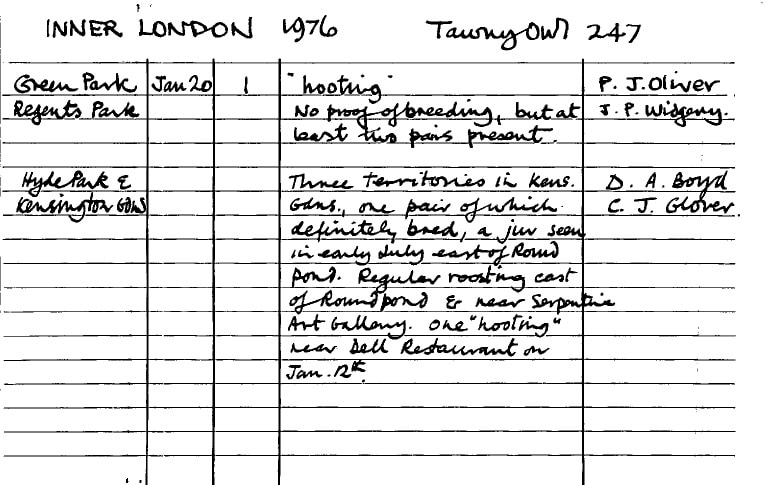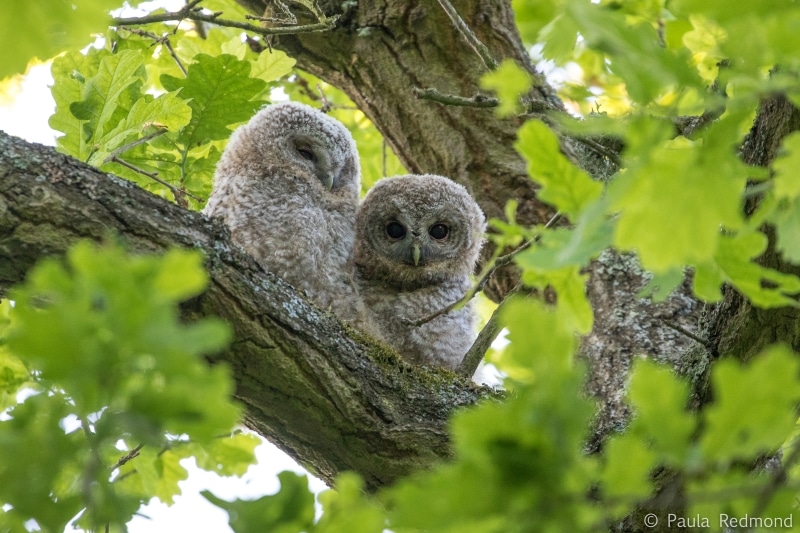Katharine Davies, GiGL Community Officer

An example of a recording card
The Zooniverse project to transcribe historic London Bird Records collected by the London Natural History Society (LNHS) was launched at the end of April 2018. The LNHS has been a long term partner of GiGL; they have been recording within a 20 mile radius from St. Paul’s Cathedral since 1958. Through many decades of field expeditions they have collected thousands of bird observations across London. These large boxes of paper records were stored away (an example of some of our GiGL Treasure) but through crowd-sourcing we hope to make them more accessible. Once transcribed these records will be added into our species database and will be used by ecologists, conservationists and decision-makers to inform policies and management of London’s biodiversity.

Tawney Owls (c) Paula Redmonds
For over a decade GiGL have had a dedicated volunteer transcribing the records for the 1980s but we calculated it would take him 70 years for the records to be completed. Attempting to speed up the rate of transcription the Zooniverse citizen science project was born. Since the launch more than 670 volunteers have taken part in the project and incredibly they have completed over 8,500 classifications. The swift work of the volunteers is much faster than we could have hoped for!
The project has also enabled volunteers to discuss changes in history across London, through the Zooniverse website ‘talk’ tool. For example, there have been records occurring at old bomb sites, sad tales of nest destruction and sightings of unusual species such as the pink-footed goose. These examples show how crucial and extensive these data are to providing a historical context to London species. The talk board also enables people to ask questions and compare cards.
This is the first time a crowd-sourcing platform like Zooniverse has been used for this kind of transcription project. The preliminary results are great and the colossal efforts of the volunteers have not gone unnoticed – impressing and interesting many in the sector. Currently, the project involves transcribing the 14,000 bird record cards for the 1970s, however there is the possibility of expanding to subsequent decades and other paper records in the future. GiGL would like to thank all the volunteers who have contributed to the conservation of London birds so far and we look forward to keeping you updated with its progress.
